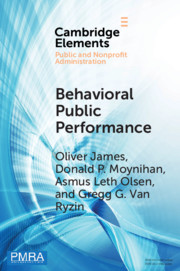Numerical performance information is increasingly important to political decision-making in the public sector. Some have suggested that biases in citizens’ processing of numerical information can be exploited by politicians to skew citizens’ perception of performance. I report on an experiment on how citizens evaluate numerical performance information from a public school context. The experiment is conducted with a large and diverse sample of the Danish population (N=1156). The analysis shows a strong leftmost-digit-bias in citizens’ evaluation of school grading information. Thus, very small changes in reported average grades, which happen to shift the leftmost grade digit, can lead to very large shifts in citizens’ evaluation of performance. The rightmost digit on the grade is almost fully ignored.
